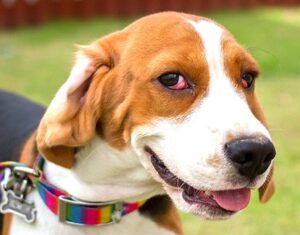-
Adopt
-
Veterinary Care
Services
Client Information
- What to Expect – Angell Boston
- Client Rights and Responsibilities
- Payments / Financial Assistance
- Pharmacy
- Client Policies
- Our Doctors
- Grief Support / Counseling
- Directions and Parking
- Helpful “How-to” Pet Care
Online Payments
Emergency: Boston
Emergency: Waltham
Poison Control Hotline
-
Programs & Resources
- Careers
-
Donate Now
Brachycephalic dogs are those with condensed snouts that often cause respiratory distress. Some brachycephlic breeds include:
- Boston Terriers
- English Bulldogs
- French Bulldogs
- Pugs
- Cavalier King Charles Spaniels
- Shar-Pei
- English Mastiff
- Shih Tzu
- Pekinese
Unlike most dogs with upper airways that enable air to pass freely through the trachea, the anatomy of brachycephalic dogs can present issues and hamper clear, easy breathing.
The key components of the brachycephalic airway syndrome include:
- Elongated soft palate that extends beyond the tip of the epiglottis making airflow into the lungs difficult
- Stenotic nares (malformed nostrils that are narrow or collapse inward during inhalation, making it difficult for the dog to breathe through its nose)[1]
 |
 |
| Stenotic nares before surgery | Stenotic nares after surgery |
- Hypoplastic trachea
- Everted laryngeal saccules (a condition in which tissue within the airway, just in front of the vocal cords, is pulled into the trachea (windpipe) and partially obstructs airflow) [1]
 Clinical signs: These components generally lead to the following clinical signs:
Clinical signs: These components generally lead to the following clinical signs:
- Snorting
- Loud snoring
- Coughing
- Gagging
- Regurgitation
- Vomiting
- Difficulty eating
- Exercise Intolerance
Surgery can shorten an elongated soft palate, improve the dog’s comfort, and reduce these clinical signs (though loud snoring often remains even after surgery). The most concerning of these clinical signs are regurgitation and vomiting, and if your brachycephalic dog experiences these symptoms, please consult with your veterinarian as to how to address these issues.

Dr. Mike Pavletic uses a CO2 laser during surgery on stenotic nares.
Brachycephalic soft palate and stenotic nares surgery: To ease airway issues, veterinary surgeons can shorten an elongated palate in order to prevent blockage of the airway at the back of the throat. In addition to improving the dog’s breathing, this can reduce risk of aspiration of food. Surgery at Angell is usually done with a CO2 laser to reduce bleeding and expedite healing. In addition to shortening elongated palates, the CO2 laser can be used to resection stenotic nares (the area around the nostril that may be partially sealed in a brachycephalic dog). As with any surgery, there are postoperative risks, and dogs should be carefully monitored for aspiration pneumonia, sinusitis, or rhinitis. At Angell, most brachycephlic patients undergoing soft palate surgery are held overnight in Angell’s Critical Care Unit for observation with some time spent in our oxygen cages for additional breathing comfort postoperatively. Most patients return home the following morning.
Short term prevention: It is especially important for brachycephlic dogs to avoid stress and heat. To prevent distress, take the following steps with your dog, but be sure to consult your vet if symptoms progress:
- Avoid stress/heat
- Use a harness instead of a collar
- Avoid overfeeding
- Maintain ideal body weight
- Other issues to which your brachycephalic dog may be predisposed include:
- Inflammation of skin folds
- Face Fold and Tail Fold Pyoderma
- Mating and Dystocia/Caesarian Sections (only applicable if the dog is intact)
Brachycephalic Dental issues:
- Malocclusion – misalignment of the teeth.
- Dental crowding

Cherry eye in a dog
Brachycephalic Ocular Issues:
- Ectropion/entropion – inward/outward rolling of eyelid
- Lagophthalmia – inability to close eyelids fully
- Exophthalmos/eye proptosis – abnormal protrusion of the eye
- Nasal fold trichiasis – fur around the nose fold rubs against the eye
- Distichiasis – abnormally placed eyelashes rubs against the eye
- Poor tear production
- Cherry Eye – prolapse of the third eyelid
For more information on care of your brachycephalic dog, please consult your primary veterinarian or visit https://www.acvs.org/small-animal/brachycephalic-syndrome. Additional information is available at https://iloveveterinary.com/blog/problems-associated-brachycephalic-dogs. For information about soft palate surgery, contact Angell’s Surgery service at 617-541-5048.
References:
1. https://www.acvs.org/small-animal/brachycephalic-syndrome